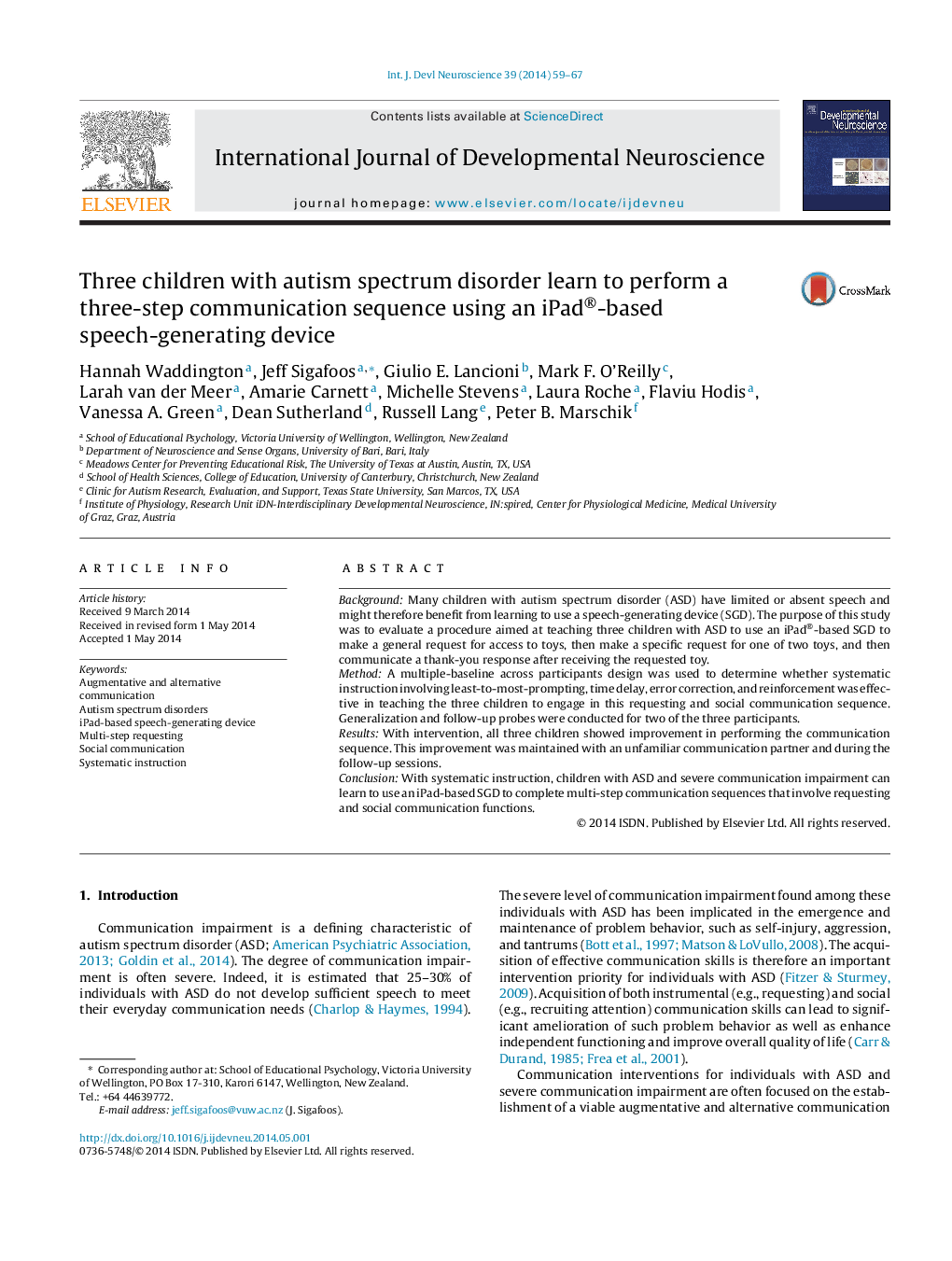| Article ID | Journal | Published Year | Pages | File Type |
|---|---|---|---|---|
| 2785896 | International Journal of Developmental Neuroscience | 2014 | 9 Pages |
•Three children with ASD learned to use an iPad®-based speech-generating device to engage in a three-step communication sequence.•The sequence included requesting and social communication responses.•Intervention involved response prompting and reinforcement procedures.•With intervention, the children showed increased performance of the communication sequence.
BackgroundMany children with autism spectrum disorder (ASD) have limited or absent speech and might therefore benefit from learning to use a speech-generating device (SGD). The purpose of this study was to evaluate a procedure aimed at teaching three children with ASD to use an iPad®-based SGD to make a general request for access to toys, then make a specific request for one of two toys, and then communicate a thank-you response after receiving the requested toy.MethodA multiple-baseline across participants design was used to determine whether systematic instruction involving least-to-most-prompting, time delay, error correction, and reinforcement was effective in teaching the three children to engage in this requesting and social communication sequence. Generalization and follow-up probes were conducted for two of the three participants.ResultsWith intervention, all three children showed improvement in performing the communication sequence. This improvement was maintained with an unfamiliar communication partner and during the follow-up sessions.ConclusionWith systematic instruction, children with ASD and severe communication impairment can learn to use an iPad-based SGD to complete multi-step communication sequences that involve requesting and social communication functions.
